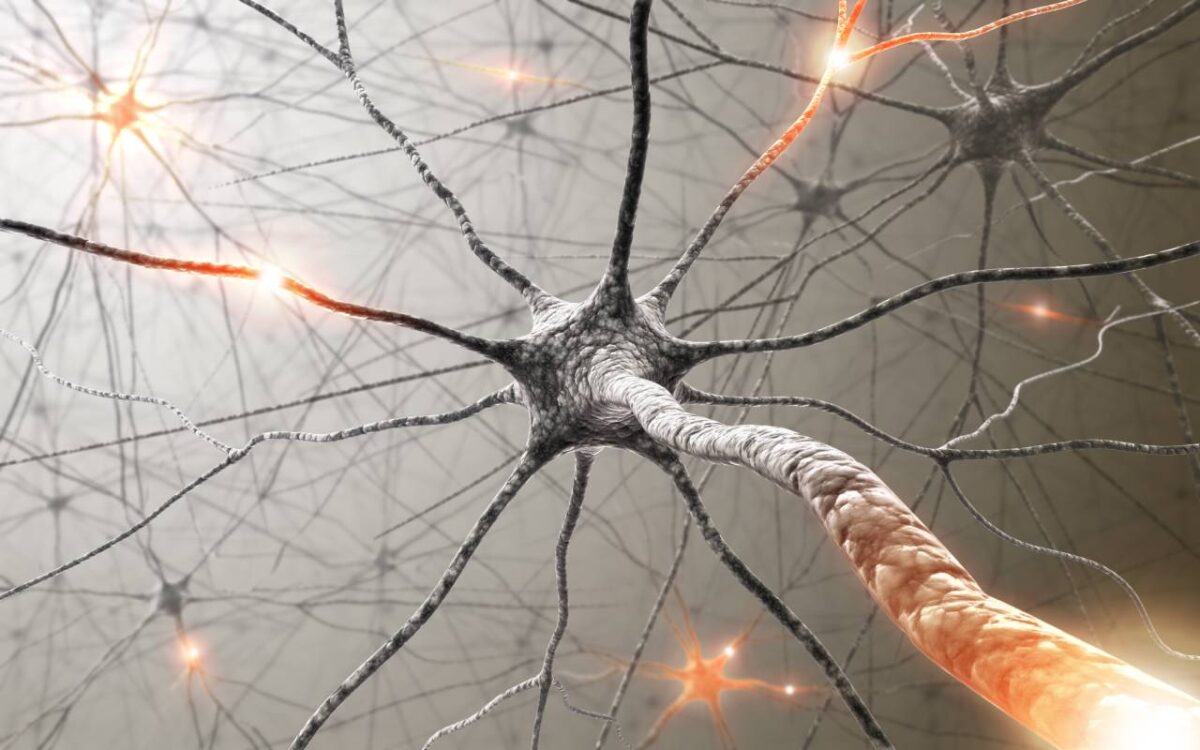During synaptogenesis, the formation of synapses among neurons, in the developing brain, exposure to drugs that antagonize NMDA glutamate receptors or agonize ʏ-amminobutyric acid-ergic (GABA-ergic) transmission, such as many anesthetic agents, can induce significant apoptosis and glutamate-induced toxicity, also known as excitotoxicity [1]. Murine models have shown this occurs through a depletion of Akt serine/threonine kinase, a protein vital to neuronal survival. Akt is phosphorylated by the plasma membrane receptors Trk and p75 neurotrophic receptor (p75NTR), which are in turn modulated by neurotrophins such as nerve growth factor (NGF), brain-derived neurotrophic factor (BDNF), and neurotrophic factors 3-5 (NT3/4/5) [2]. Neurotrophins have anti-apoptotic properties and may prevent excitotoxic death through mitochondrial regulation [3]. Dexmedetomidine, a drug used by anesthesiologists, may have beneficial neuroprotective effects in addition to its sedative effects.
Until the turn of the 20th century, the only anesthetics that were approved for use either antagonized NMDA or mimicked GABA transmission [4]. When dexmedetomidine, a highly selective α2-adrenergic receptor agonist, was introduced, researchers began discovering its neuroprotective qualities. Ma et al. demonstrated dexmedetomidine dose-dependently attenuated neuronal injury in neuronal-glial co-cultures and improved the neurological functional deficit caused by hypoxic-ischemic insult in vivo [5]. Other studies have shown dexmedetomidine reduces NMDA-induced excitotoxicity during the perinatal period in mice [6,7]. Researchers of a 2018 Chinese study suggested dexmedetomidine’s neuroprotective quality arises from its activation and maintenance of the extracellular signal-regulated kinase (ERK) pathway [8]. This pathway is known to be activated by BDNF [9].
Mice pups were used for an experiment that questioned if and through what mechanisms dexmedetomidine enhanced BDNF release [10]. On postnatal day-5 (P5), excitotoxic brain lesions were induced with intracerebral injection of ibotenate, a glutamate analog which activates both NMDA and group I metabotropic receptors. On P10, animals were sacrificed, and their brains analyzed. Mice who had been injected with BDNF (on P5) showed significantly smaller ibotenate-induced excitotoxic lesions than controls. In primary neuronal cell cultures, BDNF exerted a potent neuroprotective effect regardless of whether the cells showed any excitotoxic stress, demonstrating BDNF’s powerful anti-apoptotic effects. Dexmedetomidine demonstrated similar neuroprotection: pups which were given dexmedetomidine 1 hr before ibotenate-induced lesion had much smaller lesions. Additionally, this neuroprotective effect, measured through cell viability, was diminished when yohimbine, an α2-adrenergic antagonist, was administered, suggesting the anesthetic’s effect comes from α2-adrenergic receptor activation [10]. Creating a hierarchal relationship between the two, dexmedetomidine was found to increase BDNF expression in astrocyte, but not neuronal, cell cultures. In mice displaying excitotoxic lesions, BDNF antibody attenuated dexmedetomidine’s neuroprotective effect, indicated through increased lesion size. However, in neuronal cell cultures, dexmedetomidine’s effect persisted despite BDNF antibody injection [10].
Interestingly, various CNS cells appear to assume different roles in models of excitotoxic lesions. In particular, astrocytes shuttle cations like K+, modulate inflammation, and produce neurotrophic factors. They are thought to be the most important cells for limiting the excitotoxic potential of glutamate because of their expression of high-affinity glutamate transporters such as EAAT1/GLAST and EAAT2/GLT-1 [11]. As previously mentioned, dexmedetomidine displays its neuroprotective effect via α2-adrenergic antagonists [12]. In the murine cortex, α2-adrenergic receptors are strongly expressed in astrocytes and oligodendrocytes [13]. This may explain why the study described above showed dexmedetomidine stimulates BDNF expression in astrocytes, but not neurons [10].
Astrocytes can release growth factors besides BDNF, including epidermal growth factor, vascular endothelial growth factor (VEGF), and glial cell-derived neurotrophic factor [13]. Future studies may examine in further detail if dexmedetomidine stimulates other pro-survival molecules.
References
- Jevtovic-Todorovic, V., Hartman, R. E., Izumi, Y., Benshoff, N. D., Dikranian, K., Zorumski, C. F., Olney, J. W., & Wozniak, D. F. (2003). Early exposure to common anesthetic agents causes widespread neurodegeneration in the developing rat brain and persistent learning deficits. Journal of Neuroscience, 23(3), 876–882. https://doi.org/10.1523/JNEUROSCI.23-03-00876.2003
- Lu, L. X., Yon, J.-H., Carter, L. B., & Jevtovic-Todorovic, V. (2006). General anesthesia activates BDNF-dependent neuroapoptosis in the developing rat brain. Apoptosis, 11(9), 1603–1615. https://doi.org/10.1007/s10495-006-8762-3
- Degos, V., Loron, G., Mantz, J., & Gressens, P. (2008). Neuroprotective strategies for the neonatal brain. Anesthesia and Analgesia, 106(6), 1670–1680. https://doi.org/10.1213/ane.0b013e3181733f6f
- Kaur, M., & Singh, P. M. (2011). Current role of dexmedetomidine in clinical anesthesia and intensive care. Anesthesia, Essays and Researches, 5(2), 128–133. https://doi.org/10.4103/0259-1162.94750
- Ma, D., Hossain, M., Rajakumaraswamy, N., Arshad, M., Sanders, R. D., Franks, N. P., & Maze, M. (2004). Dexmedetomidine produces its neuroprotective effect via the α2A-adrenoceptor subtype. European Journal of Pharmacology, 502(1), 87–97. https://doi.org/10.1016/j.ejphar.2004.08.044
- Laudenbach, V., Mantz, J., Lagercrantz, H., Desmonts, J.-M., Evrard, P., & Gressens, P. (2002). Effects of α2-adrenoceptor agonists on perinatal excitotoxic brain injury: Comparison of clonidine and dexmedetomidine. Anesthesiology, 96(1), 134–141. https://doi.org/10.1097/00000542-200201000-00026
- Paris, A., Mantz, J., Tonner, P. H., Hein, L., Brede, M., & Gressens, P. (2006). The effects of dexmedetomidine on perinatal excitotoxic brain injury are mediated by the alpha2A-adrenoceptor subtype. Anesthesia and Analgesia, 102(2), 456–461. https://doi.org/10.1213/01.ane.0000194301.79118.e9
- Wang, K., & Zhu, Y. (2018). Dexmedetomidine protects against oxygen-glucose deprivation/reoxygenation injury-induced apoptosis via the p38 MAPK/ERK signalling pathway. Journal of International Medical Research, 46(2), 675–686. https://doi.org/10.1177/0300060517734460
- Maharana, C., Sharma, K. P., & Sharma, S. K. (2013). Feedback mechanism in depolarization-induced sustained activation of extracellular signal-regulated kinase in the hippocampus. Scientific Reports, 3(1), 1103. https://doi.org/10.1038/srep01103
- Degos, V., Charpentier, T. L., Chhor, V., Brissaud, O., Lebon, S., Schwendimann, L., Bednareck, N., Passemard, S., Mantz, J., & Gressens, P. (2013). Neuroprotective effects of dexmedetomidine against glutamate agonist-induced neuronal cell death are related to increased astrocyte brain-derived neurotrophic factor expression. Anesthesiology, 118(5), 1123–1132. https://doi.org/10.1097/ALN.0b013e318286cf36
- Trendelenburg, G., & Dirnagl, U. (2005). Neuroprotective role of astrocytes in cerebral ischemia: Focus on ischemic preconditioning. Glia, 50(4), 307–320. https://doi.org/10.1002/glia.20204
- Engelhard, K., Werner, C., Kaspar, S., Möllenberg, O., Blobner, M., Bachl, M., & Kochs, E. (2002). Effect of the α2-agonist dexmedetomidine on cerebral neurotransmitter concentrations during cerebral ischemia in rats. Anesthesiology, 96(2), 450–457. https://doi.org/10.1097/00000542-200202000-00034
- Hertz, L., Lovatt, D., Goldman, S. A., & Nedergaard, M. (2010). Adrenoceptors in brain: Cellular gene expression and effects on astrocytic metabolism and [Ca2+]i. Neurochemistry International, 57(4), 411–420. https://doi.org/10.1016/j.neuint.2010.03.019
